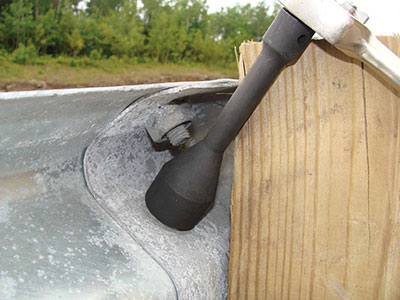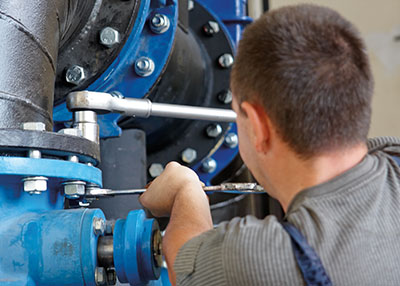
Features
Columns
Education
Choosing the right tool for the job
The right tool can save time and money for your company’s maintenance department.
October 22, 2013 By Gary Nuttall
When Cummins Eastern Canada, the global engine and power generator
manufacturer, needed to turn a turbocharger 120 degrees and access it at
the circlip, while holding the turbocharger itself, improvising a tool
to do the job was not an option.
When Cummins Eastern Canada, the global engine and power generator manufacturer, needed to turn a turbocharger 120 degrees and access it at the circlip, while holding the turbocharger itself, improvising a tool to do the job was not an option.
 |
|
Instead, Cummins technicians worked with an established hand tool manufacturer on creating a custom locking plier for this specific application. The time it took to “clock the turbo” using the custom-made hand tool was reduced by six times, greatly enhancing staff efficiency while also ensuring worker safety.
Choosing the correct tool to tackle a specific task can make the difference between a job well done and a tragedy. Even if you think the tool you need doesn’t exist, it’s worth asking for an expert opinion.
The assortment of tools available in various shapes and sizes goes well beyond the limited assortment found at the local home improvement store. Some tools that are specifically designed to handle unique tasks in MRO (maintenance, repair and operations) and roadbuilding industrial applications have to be special ordered or even custom built.
Any of the two options is better than risking a loss in productivity or a risking personal injury.
Here are some guidelines on choosing the correct tool when working on even the simplest project:
Use a tool for its intended purpose
For many professional tool users, identifying the right tool is second nature. When that tool is not readily available, make the extra effort and get it rather than substitute.
It can be something as simple as choosing between a metric and imperial socket or wrench. Some metric and imperial sizes, although close in terms of tolerances, can lead to undesirable outcomes if interchanged. Always use the correct size socket or wrench for the fastener being turned.
A clamp is another very common tool used to hold various pieces in place. The shape of the work piece dictates the correct type of clamp to use. Irregular shapes will require a swivel top, and oversized work pieces will require a clamp with a deep throat.
Always start with the need and look for the right tool specifically designed to tackle it.
Follow the manufacturer specifications before use
This is of paramount importance when working on projects where even the slightest error could have disastrous consequences. One such project might be handling a load using an eyebolt.
Considering the variety of loads an eyebolt might be asked to secure, liability is an important factor to consider. A rated eyebolt can be traced to a specific batch, and it will also identify the grain of steel used to manufacture it. Always use rated eyebolts and ensure you utilize them within their rated capacity to eliminate the risk of failure. The same applies to hoists, pullers, and even pliers and snips. Always use a tool within its designed capacities.
Use the best quality tools you can afford
Tool quality is very difficult to quantify and summarize in one single feature. There are a number of things that have to be taken into account.
 |
|
| Making sure the tools you use have the right leverage is important for proper maintenance.
|
Tools made of a premium grade of steel will last longer than their counterparts made with carbon steel. The heat treatment process makes the difference between a tool that snaps and the one that bends.
Lower-quality tools run the risk of breaking while on the job, which can result in damage to the product being worked on and injury to the tradesperson.
As an overarching guide, look for brand-name tools that have stood the test of time while being used in the most demanding applications and work environments.
Don’t improvise
Perhaps the handle of the ratchet you want to use to turn an specific bolt is not long enough to provide the much-leverage, or the standard chrome extension you need to reach into a confined space doesn’t do the job.
Welding two pieces together to make a longer piece or slipping pipe over top is not a safe solution. Rather, consider working with a tool manufacturer that can adapt a tool to your exact dimensions.
The custom-designed socket removes bolts where the angle of operation will lead to a regular socket being stuck between the bolt ends. With its 45-degree taper, this custom-designed socket is quickly able to remove the bolts without the chance of the socket jamming.
Some might be reluctant to consider custom tools due to the perceived higher costs. In reality, a reputable tool manufacturer that has the proper knowledge and equipment in place is able to deliver the right tool on a surprisingly reasonable budget, given the gain in productivity and workplace safety.
Tools are exensions of your hands. Each project should begin with proper planning, including an assessment of the correct tools needed for the job. Following the simple guidelines above will lead to increased productivity, lower operating costs and improved safety.
Gary Nuttall is president of Gray Tools Canada.
Print this page